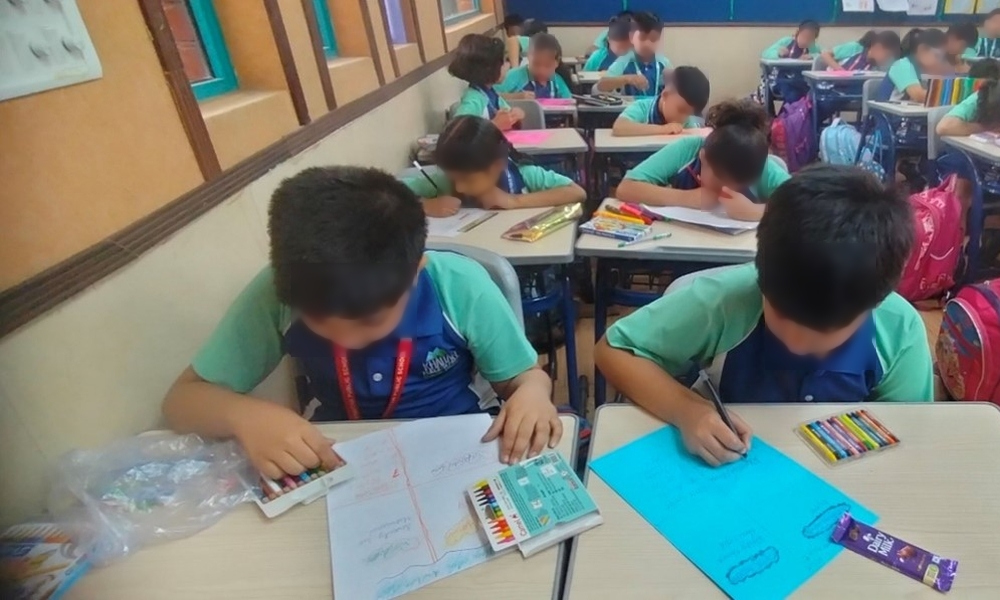The National Education Policy (NEP) spotlights competency-based learning and assessment as central to transforming education. In today’s reader submission, maths educator Richa Thakur shares how this approach is being integrated into the curriculum at Khaitan Public School in Ghaziabad. She also discusses 5 challenges of implementation, and how staff have worked to overcome them.
At Khaitan Public School, competency-based education (CBE) is a cornerstone of our academic philosophy. We are dedicated to fostering a learning environment where students progress based on their mastery of specific skills and competencies. As every learner is unique and no learner should be left behind, we prioritise personalised learning paths to ensure that each student can learn at their own pace and in their own style.
Benefits of competency-based education
- Personalised learning: Students receive tailored education that meets their individual needs and learning styles. This results in higher engagement and motivation.
- Mastery and retention: Students achieve a deep understanding of the material, as they must demonstrate mastery before moving on. This leads to better retention and application of knowledge.
- Real-world relevance: CBE focusses on skills and knowledge that are directly applicable to real-world situations, better preparing students for college, careers, and life.
- Equity: By allowing students to progress at their own pace and providing additional support as needed, CBE can help close achievement gaps and ensure all students reach their full potential.
- Accountability and transparency: Clear competencies and learning outcomes provide transparency for students, parents, and educators, making it easier to track progress and identify areas for improvement.
What we do at Khaitan Public School
Our curriculum has been designed to integrate real-life applications and project-based learning, allowing students to demonstrate their understanding through practical and hands-on learning experiences. For example, in the place value anchor chart activity (shown in the photo at the top of this article), students of grade 4 use a 5-digit number to break down its individual digits by place value. They label the ones, tens, hundreds, thousands, and ten-thousand columns, showing how each digit represents a different value based on its position. This visual representation helps students better understand the concept of place value and how numbers are built, reinforcing their number sense skills in a hands-on and engaging way.
CBE workshops are conducted for teachers to provide practical training on curriculum design, assessment methods, and personalised learning techniques. Recently, a workshop was conducted for middle school social science department teachers on using competency-based questions (CBQs) in social science.
Basing worksheets and assessments on CBQs ensures alignment with key learning objectives. We prepare students for more than just exams, but for life beyond the classroom, equipping them with the critical thinking, problem-solving, and collaborative skills necessary for future success. For example, a competency-based assessment may involve assessing students’ work on projects, presentations, or problem-solving tasks that reflect real-life challenges.
Challenges and solutions
Shifting pedagogical practices: Transitioning from traditional teacher-centred instruction to student-centred learning can be challenging for educators accustomed to traditional teaching methods. Professional development and training opportunities for teachers have helped to familiarise them with competency-based learning principles and instructional strategies.
Curriculum alignment: Ensuring alignment between competency-based learning objectives and curriculum standards can be complex, especially when curriculum frameworks are rigid or outdated. Staff across the school have conducted a thorough review of the existing curriculum standards and identified areas for alignment with competency-based learning goals.
Assessment and evaluation: Designing valid and reliable assessments to measure student mastery of competencies can be challenging, particularly when traditional tests may not align with competency-based learning goals. Staff across the school have developed a variety of authentic assessment methods, such as performance tasks, portfolios, projects, and presentations, that allow students to demonstrate mastery of competencies in real-world contexts. We use formative assessment strategies to monitor student progress and provide timely feedback for improvement.
Individualised learning paths: Tailoring instruction to meet the diverse learning needs and pace of each student can be challenging in a competency-based learning environment with limited resources and support. In the preparatory school, we have implemented flexible scheduling and grouping strategies that allow students to progress at their own pace and receive targeted support as needed. We have used technology-enabled learning platforms and adaptive software to provide personalised learning experiences and scaffold instruction based on individual student needs.
Engaging parents: Engaging parents in supporting competency-based learning initiatives may be challenging due to a lack of awareness or understanding of this approach to education. We have provided opportunities for parents to participate in workshops and school events focused on competency-based learning, communicating with them about the benefits of competency-based learning and how it supports student success.
What is your school doing to implement competency-based assessment? Do you have professional learning sessions on competency-based teaching and learning? Do external experts facilitate the sessions?
In this article, Richa Thakur says some parents may have a lack of awareness or understanding of competency-based teaching and learning. What is the situation in your own school? How are you communicating with parents?



